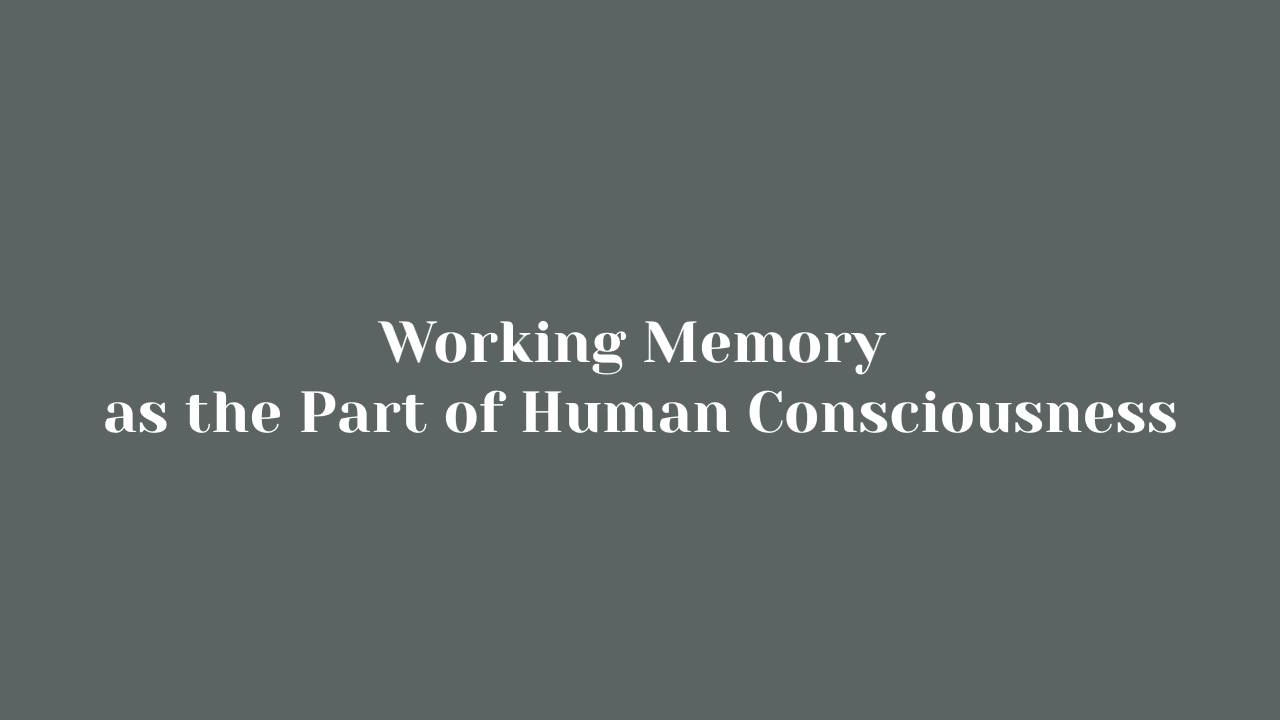Working Memory as the Part of Human Consciousness

Working memory determines the ability to memorize the small fragments of information necessary for momentary thinking, for example, solving a logical problem or understanding the complex information. However, working memory has some limitations and develops at a slower pace than short-term memory. It plays an essential role in navigation and complex cognitive tasks such as understanding, learning, and reasoning. Therefore, working memory, as an indispensable component of the memorizing process, requires training and improving.
According to Peter Doolittle (2013), the narrator of the video, working memory is the part of human consciousness that helps to think immediately in any time, therefore, it has to operate constantly. It has some basic components that allow people to store information and immediate experiences. It enables a person to refer to long-term memory and use the stored knowledge. The working memory assists to mix the new knowledge with already known information to use it for the personal short-term objectives such as a choice of cookies or thinking how to enter a hotel room.
Working memory is an inevitable component of person’s everyday life. It helps to make choices and react rapidly to the events and actions in the outside world. Furthermore, the working memory ensures investigating the achieved experience and implementing it to certain goals. It means that this type of memory, eventually, enables people to understand the world, extract needful knowledge, and obtain some positive outcomes (Alloway & Alloway, 2014, p. 94). For example, the working memory allows people to communicate with each other using the facts obtained from the certain experience. In addition, it helps to build the communicational process, which involves evaluation of the interlocutor, answering to the questions, and forecasting of the possible results of the conversation.
According to Doolittle, an average person can hold four pieces of the information during 10-20 seconds. However, due to the limitations of the working memory, these pieces of the information should be immediately applied to some knowledge or action, otherwise the information will disappear. To prove the fact that the new information strikes the person all the time, Doolittle conducted an experiment with the audience in the room to show the capabilities of the working memory. By asking to memorize five words, with the further resolving of the simple tasks, he showed that these five words were lost from the memory because a person is not able to hold them more than 20 seconds by gaining the additional information.
Despite all positive contributions and abilities of the working memory, it is highly limited in capacity, duration, and focus. Moreover, these limitations have the huge impact on the human’s reasoning and conducting the everyday life. As the narrator of the video stated, many people had the problems with situation when they were coming from one room to another and forgot what they needed. To improve the capacity of the working memory, a person should use the certain strategies provided in the presented video. For instance, Doolittle states that to negotiate that problems with working memory, a person should think in terms of images. The human’s brain perceives the information in images much better than in words. Therefore, while reading a book, it is highly useful to imagine the events and characters. It contributes to the memorizing of the whole book with the smallest peculiarities of the plot. Another useful strategy is organization and support of the knowledge in the way that has some meaning for a person. The supporting of the information should be conducted with different organizational charts or images. In this case, a person can memorize the obtained data successfully.
To conclude, according to Peter Doolittle, working memory is a highly important element of the memorizing process. It allows reconsidering the obtained experience and knowledge and implementing it to everyday life. Doolittle claims that an average person, using the working memory, can hold in mind only four pieces of the information. Regardless discussed contributions of the working memory, it is limited in terms of duration, capacity, and focus. However, using the certain training methods such as organization and imagery of the perceived information, a person can improve the capacity of the working memory.
References
Alloway, T., & Alloway, R. (2014). The working memory advantage: Train your brain to function stronger, smarter, faster. New York, NY: Simon and Schuster.
Doolittle, P. (2013, June). How your working memory makes sense of the world. [TEDGlobal]. Retrieved fom https://www.ted.com/talks/peter_doolittle_how_your_working_memory_makes_sense_of_the_world?utm_source=tedcomshare&utm_medium=referral&utm_campaign=tedspread